Moon With Venus
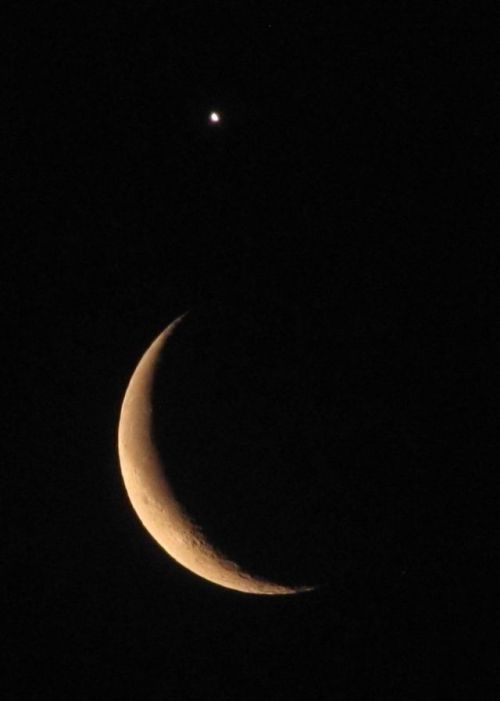
Moon with Venus
More Posts from Venusearthpassage and Others




Pioneer Venus Artwork
Artist’s concept of Pioneer Venus mission approaching the planet.
During a 14-year orbit of Venus, Pioneer Venus 1 used radar to map the surface at a resolution of 75 km (47 miles). It found the planet to be generally smoother than Earth, though with a mountain higher than Mt. Everest and a chasm deeper than the Grand Canyon. The orbiter also found Venus to be more spherical than Earth, consistent with the planet’s much slower rotation rate (one Venus day equals 243 Earth days). It confirmed that Venus has little, if any, magnetic field and found the clouds to consist mainly of sulfuric acid. Measurements of this chemical’s decline in the atmosphere over the course of the mission suggested that the spacecraft arrived soon after a large volcanic eruption, which may also account for the prodigious lightning it observed.
After a course correction on 16 August 1978, Pioneer Venus 2 released the 1.5-m diameter large probe on 16 November 1978, at about 11.1 million km from the planet. Four days later, the bus released the three small probes while 9.3 million km from Venus. All five components reached the Venusian atmosphere on 9 December 1978, with the large probe entering first.
Data from the probes indicated that between 10 and 50 km, there is almost no convection in the Venusian atmosphere. Below a haze layer at 30 km, the atmosphere appears to be relatively clear. Amazingly, two of three probes survived the hard impact. The so-called Day Probe transmitted data from the surface for 67.5 minutes before succumbing to the high temperatures and power depletion.
Credit: NASA/Rick Guidice
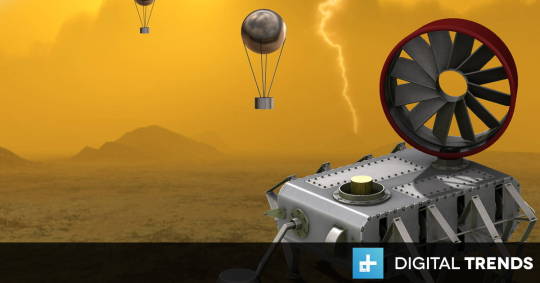
NASA is developing a rover for Venus that could survive the planet’s tumultuous atmosphere.
Can u post pics of earth 🌍

The Blue Marble—Earth as seen by Apollo 17 in 1972
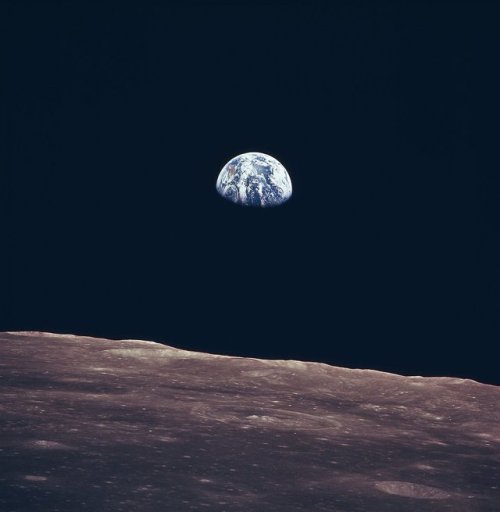
This incredible image of the Earth rise was taken during lunar orbit by the Apollo 11 mission crew in July of 1969. The first manned lunar mission, Apollo 11 launched aboard a Saturn V launch vehicle from the Kennedy Space Center, Florida on July 16, 1969 and safely returned to Earth on July 24, 1969.

This image taken by an astronaut aboard Space Shuttle mission STS-103 shows a panoramic view of Earth at moonrise.

In this rare image taken on July 19, 2013, the wide-angle camera on NASA’s Cassini spacecraft has captured Saturn’s rings and our planet Earth and its moon in the same frame.
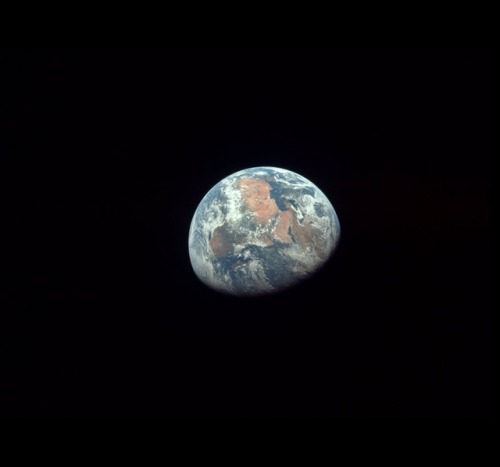
Earth as seen by Apollo 11 astronauts at the beginning of the third day of TLC

A view of the Apollo 11 lunar module “Eagle” as it returned from the surface of the moon to dock with the command module “Columbia”. A smooth mare area is visible on the Moon below and a half-illuminated Earth hangs over the horizon. The lunar module ascent stage was about 4 meters across. Command module pilot Michael Collins took this picture just before docking at 21:34:00 UT (5:34 p.m. EDT) 21 July 1969.

This panorama featuring Earth’s horizon and clouds over the South Pacific Ocean, complemented with a “tiny” distant moon (upper right), was photographed by one of the Expedition 36 crew members aboard the International Space Station.

The Sun from the Internation Space Station

images: NASA/JPL
To see more images and posts about the Earth click here.

ASTEROID DAY 2018
On 30 June 1908, 110 years ago, a 40 m asteroid struck the Earth over Tunguska, Siberia.
Destroying an area of forest the size of Greater London, this was the most significant impact event in Earth’s recent history.
Now recognised by the United Nations as Asteroid Day, 30 June marks a global opportunity to raise awareness of the threat and opportunity posed by the numerous rocky bodies traversing space.
Since 2009, ESA has played a leading role in the global hunt for risky asteroids and comets – known formally to astronomers as near-Earth objects (NEO) – and is currently developing cutting-edge widefield telescopes that will have the ability to scan the entire sky in just 48 hours.
ESA also carries out crucial analysis as part of its Space Situational Awareness (SSA) programme and mobilises observatories and astronomers worldwide through its SSA NEO Coordination Centre at the Agency’s ESRIN facility in Italy.
Each year, Asteroid Day is broadcast live across the globe with a packed programme that brings together astronauts, rock stars and scientists.
Highlighting our potentially vulnerable place in space, the live event also describes the many ingenious and yet not-far-from scifi potential solutions to these dangerous roaming rocks.
Each year hundreds of regional events also take place, with 78 countries so far having hosted concerts, community events, lectures and much more.




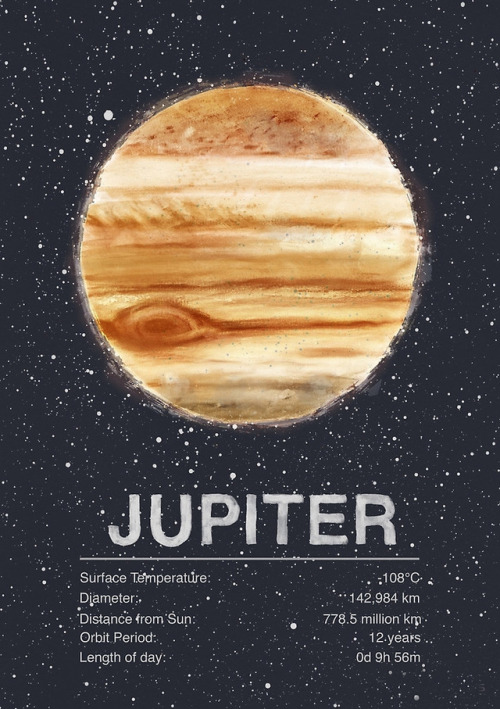



Our Amazing Solar System!


Transit of Venus in 2012
Credit: NASA / SDO









Comparison of the planets of the solar system, Pluto and Sun in relation to the earth.
Images: commons.wikimedia (Sun: Alan Friedman)









SpaceTime 20180309 Series 21 Episode 19 is now out
SpaceTime covers the latest news in astronomy & space sciences.
The show is available as a free twice weekly podcast through Apple Podcasts (itunes), Stitcher, Pocketcasts, SoundCloud, Bitez.com, YouTube, Audio Boom, your favourite podcast download provider, and from www.spacetimewithstuartgary.com
SpaceTime is also broadcast coast to coast across the United States on Science360 Radio by the National Science Foundation in Washington D.C. around the world on Tune-In Radio and as inflight entertainment aboard Virgin Australia
SpaceTime daily news blog: http://spacetimewithstuartgary.tumblr.com/ SpaceTime facebook: www.facebook.com/spacetimewithstuartgary SpaceTime Instagram @spacetimewithstuartgary SpaceTime twitter feed @stuartgary
Today’s stories…
The strange dense structure discovered below the South Atlantic Anomaly A strange dense structure has been discovered directly below the South Atlantic Anomaly and just above the Earth’s core mantle boundary. The object may provide important clues about the Earth’s magnetic field and when it’s next likely to reverse polarity.
New gravity mission to monitor climate change NASA’s next Earth Gravity mission is slated to launch aboard a SpaceX Falcon 9 rocket from the Vandenberg Air Force Base in California on April 14. The twin GRACE-FO spacecraft will continue the work of the original GRACE mission, monitoring how climate change caused by man’s use of fossil fuels was affecting the planet.
New exotic state of matter created Scientists have provided proof for a new state of matter comprising an electron orbiting an atomic nucleus at such a great distance – the space between the two can contain other bound atoms. The discovery raises new questions about the definition of an atom.
The Science Report The deadly legacy of asbestos is only now reaching its peak. Police to deploy drone killers at next month’s Commonwealth Games. Australians dying from alcohol-attributable diseases at the rate of one every 90 minutes. Taking selfies really does make your nose look bigger. A skeptic’s guide to water divining.
SpaceTime Background SpaceTime is Australia’s most respected astronomy and space science news program. The show reports on the latest stories and discoveries making news in astronomy, astrophysics, cosmology, planetary science, galactic and stellar evolution, physics, spaceflight, and general science. SpaceTime features interviews with leading Australian scientists about their latest research. The show is broadcast coast to coast across the United States by the National Science Foundation on Science360 Radio, and is available in Australia as a twice weekly podcast which averages around three million downloads annually. It’s hosted through Bitez.com on all major podcast platforms. SpaceTime is also available as inflight entertainment on Virgin Australia Airlines and on Tune in Radio. The SpaceTime program began life in 1995 as ‘StarStuff’ on ABC NewsRadio. Stuart Gary created the show while he was NewsRadio’s Science Editor and evening News anchor. Gary wrote, produced and hosted the program, consistently achieving almost 9 percent of the Australian national radio audience share - according to the Neilsen ratings survey figures for the five major Australian metro markets (Sydney, Melbourne, Brisbane, Adelaide, & Perth). The StarStuff podcast was hosted by ABC Science on line achieving over 1.3 million downloads annually. The program was axed in 2015 following ABC budget cuts. Gary resigned from the ABC, taking the show and audience with him and rebranding it as SpaceTime. The first SpaceTime episode was broadcast on February 8th 2016 and the show has been in production twice weekly ever since.
Daily Science Dump: Kepler’s First Law Edition
Bonjour my science nerds. I got a question regarding Kepler’s Three Laws because they can be somewhat confusing. And tbh, they really are. Because they can be a bit of a pain, I’ve decided to break this up into 3 sections, one for each law. They generally follow the same idea: planetary orbits are not circular. The difference between each law resides in the minute details. And because they are really detailed, I wanted to make sure I covered everything of each law so they don’t get confused. Let’s get started!
Kepler’s First Law of Planetary Motion
History
Before we get into the actual laws, we need to understand why these laws are so important. During the 1500s and early 1600s, astronomy was starting to become a big deal. We were trying to figure out where we are in the universe. During this time period, the famous geocentric and heliocentric models were stirring up massive controversy in the Catholic Church (for obvious reasons). Ptolemy brought around the geocentric model, which put Earth at the center. This was a natural thought at the time because it was a religious concept that man was God’s greatest creation, so God would want to put man at the center of everything (little presumptuous on our part tbh). Next, Copernicus said that our Sun was in the center, and all the planets orbit around the sun. This clearly didn’t go down well with the Church because it was the first instance of defying the Catholic Church, therefore defying God. In an attempt to settle down the controversy, Brahe brought around a new theory model, putting the Earth at the center, having the Sun and Moon orbiting the Earth, and then the rest of the planets orbiting the Sun. It was a very far reached model but people bought it. All of these models had one thing in common; all the orbits of the planets were circular. But none of none of the actual data fit with perfect circular orbits. This is where our boi Kepler comes in.

It was long believed that the planets should orbit along circular paths, because a circle is considered an ideal shape. But as I mentioned before, none of the data was fitting the circular shape, particularly Mars. Kepler brought around another shape, the ellipse, to explain the missing pieces of the data. An ellipse is like a flattened circle with some important properties that Kepler used for his laws. His first law focuses more on explaining the patterns of elliptical orbits. The second and third law goes into more detail on the properties of elliptical orbits.
If you’ve taken a simple geometry class, you know the basic principles of ellipses. We know there’s a major-axis and minor-axis (the diameter horizontally and the diameter vertically), the focal points, and eccentricity. All of these are important for planetary orbits. If we take a trip back to geometry, we know that the positions of the focal points affect the eccentricity, which is basically how much it’s being squished (if e = 0 then it’s a perfect circle and if e = 1 it’s a parabola).
All of this geometry going on transfers over into planetary motion. In this case, the Sun acts as one of the focal points. The other focal point is merely imaginary. Mathematically it exists but there’s nothing at that point in space that says “Hey! I’m a focal point for Saturn!”. But we know for sure that the Sun is on of the two focal points. This revelation caused a lot of uproar and many refused to believe it. Partly because the orbit of a lot planets are so close to a perfect circle it’s extremely hard to tell it’s elliptical at all.
Eccentricity has to stay between 0 and 1, like I explained earlier. An eccentricity of 0 is a perfect circle. If it’s 1 or greater, it’s a parabola. For the planetary motion, most of the planets’ eccentricity doesn’t even crack 0.1 (Pluto has a bit over 0.2 but apparently Pluto isn’t a planet #JusticeForPluto). Earth’s eccentricity is currently 0.0167, which means its very very close to a perfect circle. But not quite. To be quite honest, the fact that Kepler was able to figure out that the orbits were not circular is astonishing.
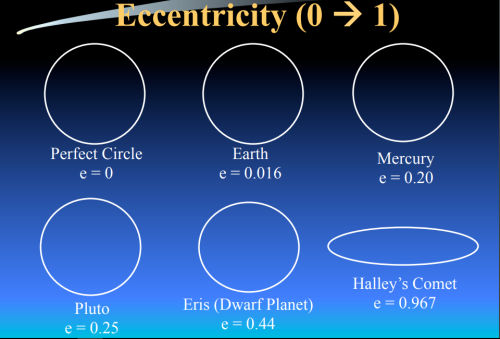
So that’s it for Kepler’s First Law of Planetary Motion! These laws were critical in understanding how our universe works and how our solar system plays out. It opened our eyes to many new ideas and thought processes. This law is just the first step of understanding the orbital tendencies of planets. On Friday, we will dive right into Kepler’s Second Law of Planetary Motion which goes into detail about the speed of the planet due to the elliptical orbit.
Don’t forget, I’m updating the Blog Website everyday with something new because I have no life…. I added cool space music! If you have any cool song recommendations for the playlist definitely shoot me a message!
If you have any questions about today’s Daily Science Dump or any past ones, don’t be afraid to ask!
As always,
Stay Nerdy!
R.L.
-
 t-empestad reblogged this · 3 months ago
t-empestad reblogged this · 3 months ago -
 francoaguevara reblogged this · 3 months ago
francoaguevara reblogged this · 3 months ago -
 francoaguevara liked this · 3 months ago
francoaguevara liked this · 3 months ago -
 rayroxxx reblogged this · 3 months ago
rayroxxx reblogged this · 3 months ago -
 rayroxxx liked this · 3 months ago
rayroxxx liked this · 3 months ago -
 giacomo-stuff liked this · 3 months ago
giacomo-stuff liked this · 3 months ago -
 scrollingwhyleblack liked this · 3 months ago
scrollingwhyleblack liked this · 3 months ago -
 a-voyd reblogged this · 3 months ago
a-voyd reblogged this · 3 months ago -
 a-voyd liked this · 3 months ago
a-voyd liked this · 3 months ago -
 shifty2be liked this · 3 months ago
shifty2be liked this · 3 months ago -
 sufiblackmamba liked this · 3 months ago
sufiblackmamba liked this · 3 months ago -
 prettylittleethingg reblogged this · 3 months ago
prettylittleethingg reblogged this · 3 months ago -
 onegmoney reblogged this · 3 months ago
onegmoney reblogged this · 3 months ago -
 wasted-lov-e reblogged this · 3 months ago
wasted-lov-e reblogged this · 3 months ago -
 sweetdreeaamss liked this · 3 months ago
sweetdreeaamss liked this · 3 months ago -
 amoksicilin liked this · 3 months ago
amoksicilin liked this · 3 months ago -
 i-am-heathcliff-234 liked this · 3 months ago
i-am-heathcliff-234 liked this · 3 months ago -
 crna-pahuljica liked this · 3 months ago
crna-pahuljica liked this · 3 months ago -
 osveta reblogged this · 3 months ago
osveta reblogged this · 3 months ago -
 osveta liked this · 3 months ago
osveta liked this · 3 months ago -
 yakamozmavisii reblogged this · 3 months ago
yakamozmavisii reblogged this · 3 months ago -
 yakamozmavisii liked this · 3 months ago
yakamozmavisii liked this · 3 months ago -
 warriorhealer liked this · 3 months ago
warriorhealer liked this · 3 months ago -
 deamonsworld liked this · 3 months ago
deamonsworld liked this · 3 months ago -
 onegmoney reblogged this · 3 months ago
onegmoney reblogged this · 3 months ago -
 he-alwaysmakesme-cry reblogged this · 3 months ago
he-alwaysmakesme-cry reblogged this · 3 months ago -
 1-the1 liked this · 3 months ago
1-the1 liked this · 3 months ago -
 imma-gotake-aa-nap reblogged this · 3 months ago
imma-gotake-aa-nap reblogged this · 3 months ago -
 pepeljugin-randevu reblogged this · 3 months ago
pepeljugin-randevu reblogged this · 3 months ago -
 chaandarchive liked this · 3 months ago
chaandarchive liked this · 3 months ago -
 ninaizantina reblogged this · 3 months ago
ninaizantina reblogged this · 3 months ago -
 ninaizantina liked this · 3 months ago
ninaizantina liked this · 3 months ago -
 pundp reblogged this · 3 months ago
pundp reblogged this · 3 months ago -
 whonmyeys liked this · 3 months ago
whonmyeys liked this · 3 months ago -
 fvckthenight reblogged this · 3 months ago
fvckthenight reblogged this · 3 months ago -
 25-to-life liked this · 3 months ago
25-to-life liked this · 3 months ago -
 beklemegerceklesmiycek reblogged this · 3 months ago
beklemegerceklesmiycek reblogged this · 3 months ago -
 blueeyes-neonsoul reblogged this · 3 months ago
blueeyes-neonsoul reblogged this · 3 months ago -
 blueeyes-neonsoul liked this · 3 months ago
blueeyes-neonsoul liked this · 3 months ago -
 wineligo liked this · 3 months ago
wineligo liked this · 3 months ago -
 elysiumxflowers reblogged this · 3 months ago
elysiumxflowers reblogged this · 3 months ago -
 onceuponatmi liked this · 3 months ago
onceuponatmi liked this · 3 months ago -
 nr1narutard reblogged this · 3 months ago
nr1narutard reblogged this · 3 months ago -
 nuestro-amor-a-distancia liked this · 3 months ago
nuestro-amor-a-distancia liked this · 3 months ago -
 dokuzsekiz liked this · 3 months ago
dokuzsekiz liked this · 3 months ago